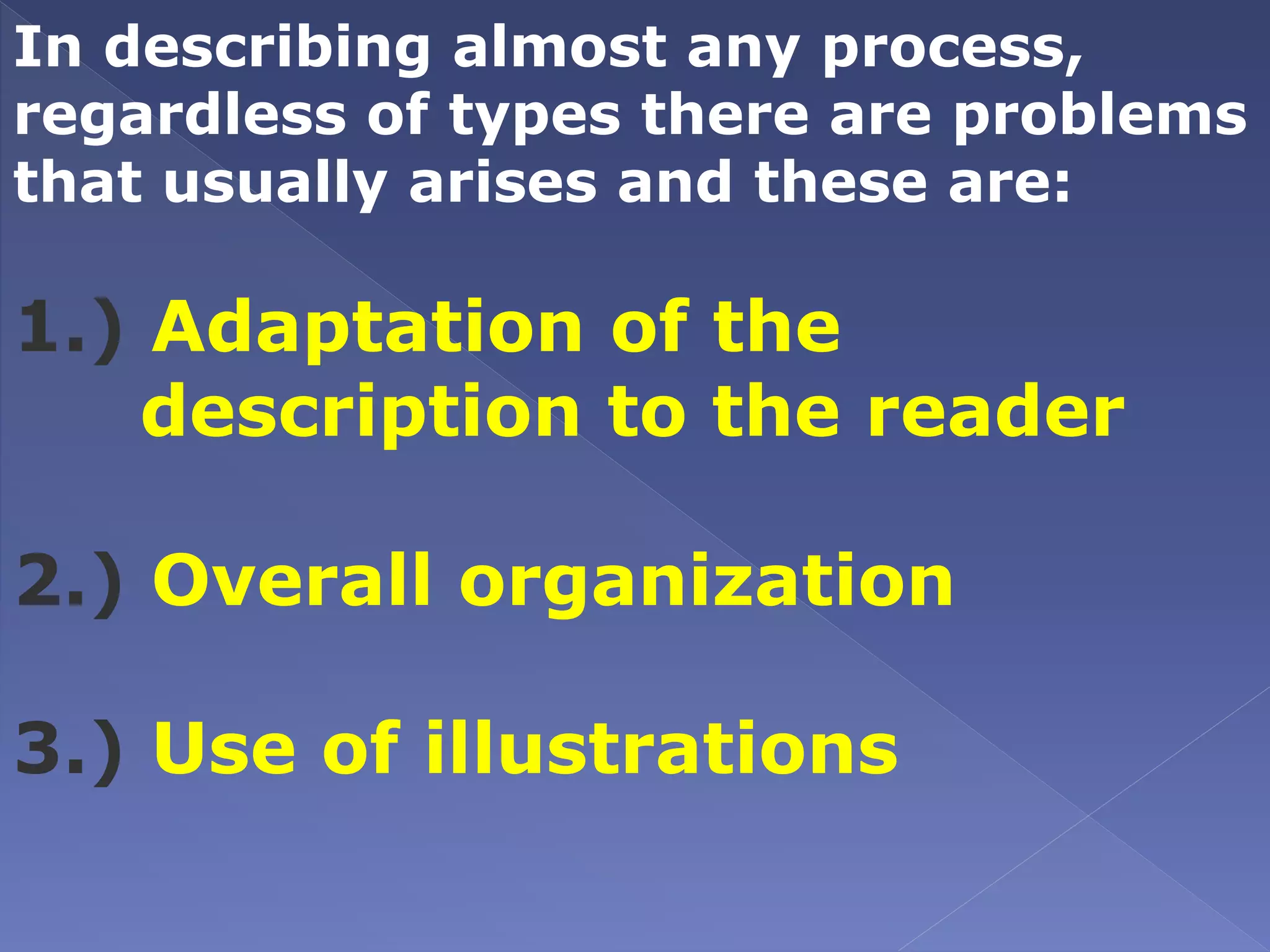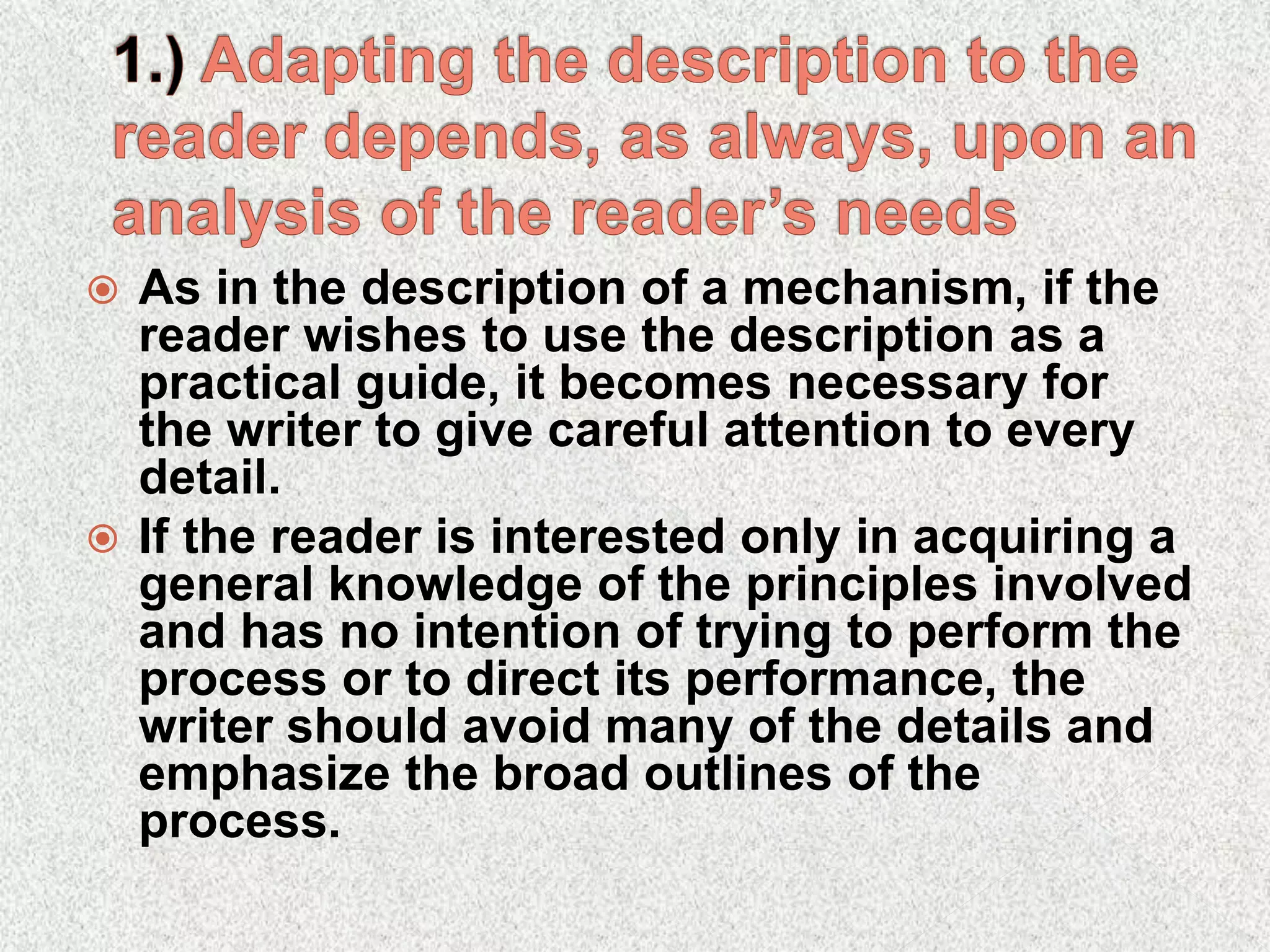This document provides guidance on describing processes. It discusses that a process description focuses on a series of actions. These actions can involve a human performer taking a conspicuous role or not. The description should include an introduction answering what, who, why, key steps, and purpose. It also discusses organizing the steps and details within each step. Stylistically, the active voice is generally best unless the performer is inconspicuous. Overall descriptions aim to help readers understand and visualize the process through clear explanations of each step in order.






























